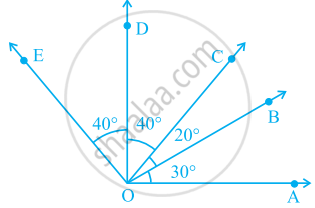Advertisements
Advertisements
प्रश्न
If the sum of the two angles of a quadrilateral is 180°. What is the sum of the remaining two angles?
उत्तर
\[\text{ Let } \left( x + y \right) \text{ be the sum of the remaining two angles .} \]
\[\text{ Since, the sum of all the angles of a quadrilateral is } 360°, \text{ we have } : \]
\[180° + \left( x + y \right)° = 360°\]
\[ \Rightarrow \left( x + y \right)° = 180° \]
\[ \therefore \text{ The sum of the remaining two angles is } 180° .\]
APPEARS IN
संबंधित प्रश्न
What is the sum of the measures of the angels of a convex quadrilateral? Will this property hold if the quadrilateral is not convex? (Make a non-convex quadrilateral and try!)
In a quadrilateral, define of the following Adjacent angles .
Complete of the following, so as to make a true statement:
A quadrilateral has ....... sides.
In Fig. 16.19, ABCD is a quadrilateral.
How many pairs of adjacent angles are there?

The angles of a quadrilateral are 110°, 72°, 55° and x°. Find the value of x.
The four angles of a quadrilateral are as 3 : 5 : 7 : 9. Find the angles.
The sum of the interior angles of a polygon is three times the sum of its exterior angles. Determine the number of sided of the polygon.
Complete the following statement by means of one of those given in brackets against each:
f consecutive sides of a parallelogram are equal, then it is necessarily a ..................
If APB and CQD are two parallel lines, then the bisectors of the angles APQ, BPQ, CQP and PQD form ______.
In the given figure.
∠AOE is a/an ______ angle
